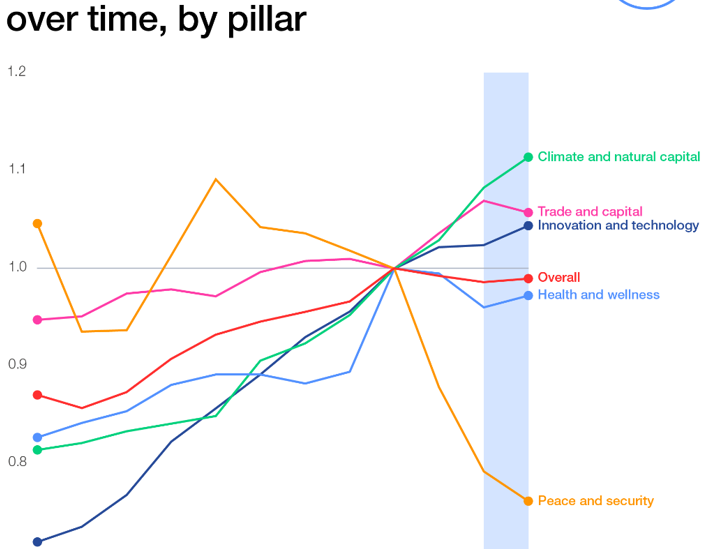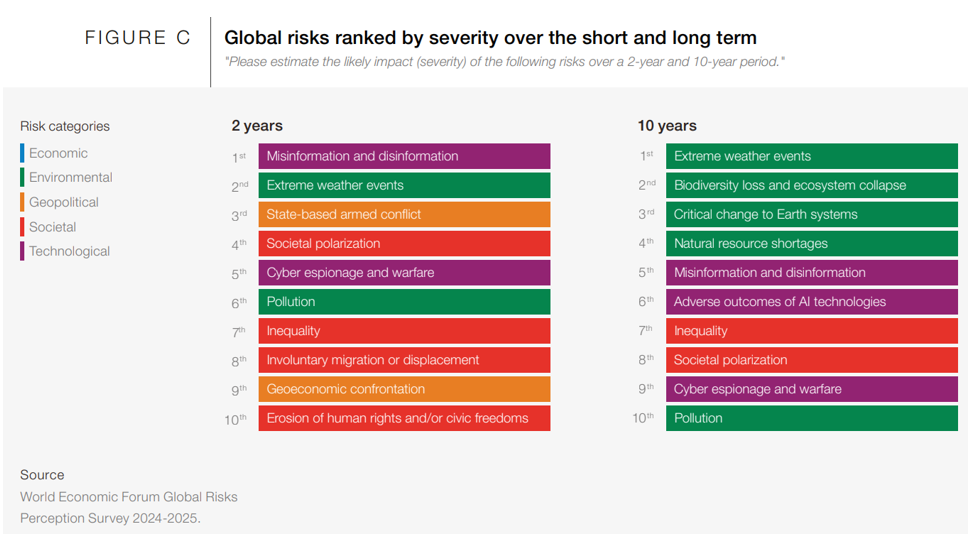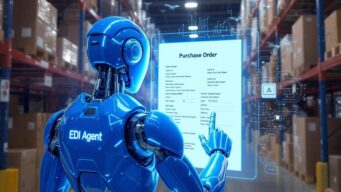It’s that time of year again. Over 3000 delegates from around the world are converging on Davos, Switzerland to attend the World Economic Forum Annual Meeting to discuss global macro-economic issues. Investors, business leaders, political leaders, economists, celebrities and journalists will be spending five days together conversing and learning about issues that are currently impacting the world and how, for example, new technologies will be impacting all aspects of business and personal life in the future.
What is collaboration in the intelligent age?
The over arching theme of this year’s event is centered around ‘Collaboration for the Intelligent Age’, a theme close to my heart here at OpenText as we are world leaders in helping companies manage all aspects of their business information and how they derive insights from this data. More on this later, but a common theme we hear from our customers is that companies must improve how they collaborate across their business ecosystems.
For some reason many companies struggle to achieve seamless collaboration across their internal and external ecosystems but for many companies it is the ‘how’ to achieve collaboration that is the sticking point. What companies need are real life examples of what collaboration can achieve and quite often companies will leverage learnings from their industry peers, analyst research and cross-country projects that quite often require multiple governments to collaborate in order to execute a successful project.
In preparation for Davos 2025, McKinsey undertook some new research looking at the global cooperation barometer over time over five different categories – Climate & Natural Capital, Trade & Capital, Innovation & Technology, Health & Wellness and Peace & Security. The graphic below nicely illustrates the current trajectory of these five dimensions:

Supply chain collaboration
As you can see, 2020 was a pivotal year as Covid-19 gripped the world. Thereafter countries continued to work together to address climate change, companies adapted their supply chains as Covid-19 impacted different parts of the world and innovation & technology continued its growth as the global working population faced a new challenge, working from home. Until Covid-19, companies were using collaboration tools sparingly but as Covid-19 started to tighten its grip on the economy, companies such as Microsoft started to see increased interest in their collaboration tool, Teams. This one tool has transformed how employees work with each other and how companies do business with each other. Microsoft Teams took business and employee collaboration to a new level nearly five years later it hasn’t relented, as many companies introduced flexible working across their enterprise.
For many companies, it was the supply chain function that stood to benefit the most from improved collaboration. Suppliers can potentially be located anywhere in the world, but increased use of technology has allowed companies to securely collaborate with their suppliers more seamlessly. The McKinsey research above shows that positive growth was due to the digitization of the global economy, which in turn fueled cooperation. This continued to drive the global adoption of new technologies. So, in summary, digitizing global information and ecommerce flows directly impacted the ability for companies to collaborate with each other.
Digitizing supply chains
OpenText have been sharing this message with companies for decades, ever since the first electronic business transaction was exchanged over fifty years ago. Companies need to ensure that all supply chain information is digitized to truly grow their business operations. This actually has many benefits but two that I wanted to highlight in this blog are seamless collaboration and the ability to obtain more meaningful and actionable insights as to what is going on across today’s supply chain operations.
The latter is being fueled by the increasing interest in Generative AI and putting business information to work but at the same time making information more accessible by changing the way in which businesses actually interact with information. But what about improving collaboration? You can’t achieve collaboration without some form of digital backbone across your business and you can’t obtain actionable insights if your information silos are not integrated.
Building a connected community across the supply chain
Every company should be trying to digitize information flows across their end-to-end supply chain, the so-called long tail of supplier onboarding relies on every supplier, no matter their size being able to exchange information electronically with their customer and then their customer’s customers. Put simply, what companies need to build is an end-to-end ‘Connected Community’ of suppliers, logistic carriers, contractors and financial institutions. This is an area that OpenText can help with, and we have been building secure connected communities for over two decades. I included the word ‘secure’ in that last sentence because many supply chain leaders are facing numerous risks across their supply chains today and there is an increase in cyber attacks impacting supply chains around the world.
Supply chain disruptions continue. Ensuring resilience is crucial
Another interesting report published this week is the World Economic Forum Global Risks Perception Survey 2024-2025, the number one risk over the next two years will be misinformation and disinformation. This has unfortunately been fueled with AI generated information that has propagated nearly every aspect of how we live our lives today. The following chart from the risk survey highlights they key risks that businesses face over the next two and ten years.

Over the past few years global supply chains have had to endure a steady stream of disruptions, from severe weather events, regional conflicts to unexpected disruptions such as the blockage in the Suez Canal and the Baltimore Bridge incident. Companies need to find a way to build increased resilience around their supply chain operations and as mentioned previously, digitizing all information flows should be job number one but adopting a cloud first strategy for managing and accessing information should be equally important as the cloud can better facilitate the exchange of information across the world.
OpenText secures your supply chain’s entire connected community
OpenText Core Collaboration Access underpins our solution to allow companies to establish a secure connected community. But we offer far more than this, we can help onboard trading partners anywhere in the world. We have over twenty ways in which companies can integrate to their trading partners and provide the necessary tools to allow companies to test their EDI integrations to ensure that information is flowing correctly across the supply chain and then into an enterprise system such as SAP.
It will be interesting to learn more from the sessions being presented at Davos 2025 this week but for me this quote from Berge Brende, President and CEO of the World Economic Forum summarizes the key theme from the conference – “Within the more unsettled climate, the only way to address urgent challenges and unlock new opportunities is through innovative, cooperative approaches”. If you would like to know more on how OpenText can help your business improve the management and collaboration of enterprise information contact us now!




